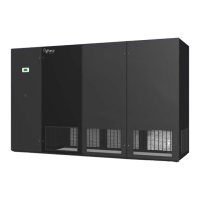20
3.2 Nameplate Ratings
Refer to the unit electrical nameplate for equipment electrical requirements. Minimum circuit ampacity
(MCA), also known as wire sizing amps, will dictate the minimum required wire gauge. Maximum
Overcurrent Protection (MOP) device amps will dictate the maximum breaker or fuse size.
3.3 Grounding
The unit cabinet must have an uninterrupted true earth ground. An electrical ground wire of adequate
size must be connected to the ground lug provided inside the main electrical box.
3.4 Voltage Tolerance
The supply voltage to the unit must be within 10% of the voltage indicated on the unit electrical nameplate.
Phase to phase imbalance must not exceed 3%. The local utility company should be contacted for
correction of improper line voltage. Deviation from voltage ratings can cause premature failures and
possibly void unit warranties.
WARNING: Check the wiring connections in the unit control panel to ensure they are
tight. Screw terminals may become loose in transit. Tightening of wiring connections is
the responsibility of the installing contractor.
3.5 Auxiliary Control Wiring for Remote Heat Exchangers
The interconnection of auxiliary control wiring for remote heat exchangers (condensers and uid coolers)
requires the connection of two (2) - 18-gauge wires for installations up to 150 feet (45 m) or 16-gauge
wires for installations from 151 feet (46 m) up to 200 feet (61 m) from the electrical control box of the
indoor evaporator to the electrical control box of the remote heat exchanger. Condensing units (i.e.,
where the compressor(s) are mounted in the remote heat exchanger) will typically require (4) or more
wiring connection points and may require heavier gauge wire. In this case, the installing contractor must
follow the applicable electrical codes to determine the required wire gauge.
Because of the wide variety of indoor evaporators and remote heat exchangers oer by Data Aire, the
installing contractor must refer to the schematic which is provided inside the electrical control box of
each unit, for the required auxiliary control wiring interconnection terminal points.
Examples:
Figure 1 - Typical Remote Heat Exchanger Interconnection Points

